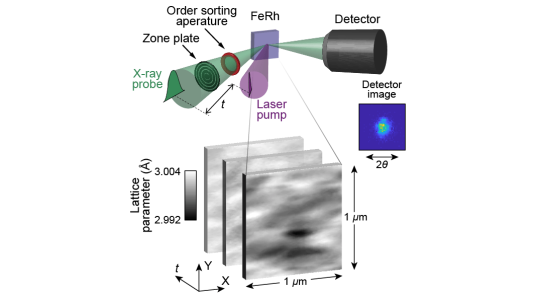
Scientific Achievement
Time-resolved x-ray nanodiffraction reveals new transition pathways during an ultrafast phase transition that are fundamentally different from quasi-equilibrium transitions.
Significance and Impact
Crucial nanoscopic insights into ultrafast phase transitions obtained via spatiotemporally resolved structural characterization provide opportunities for controlling nanoscale magnetic phases on ultrafast time scales.
Research Details
DOI: https://doi.org/10.1073/pnas.2118597119
Work was performed in part at the Center for Nanoscale Materials
Argonne National Laboratory seeks solutions to pressing national problems in science and technology. The nation’s first national laboratory, Argonne conducts leading-edge basic and applied scientific research in virtually every scientific discipline. Argonne researchers work closely with researchers from hundreds of companies, universities, and federal, state and municipal agencies to help them solve their specific problems, advance America’s scientific leadership and prepare the nation for a better future. With employees from more than 60 nations, Argonne is managed by UChicago Argonne, LLC for the U.S. Department of Energy’s Office of Science.
The U.S. Department of Energy’s Office of Science is the single largest supporter of basic research in the physical sciences in the United States and is working to address some of the most pressing challenges of our time. For more information, visit https://energy.gov/science.